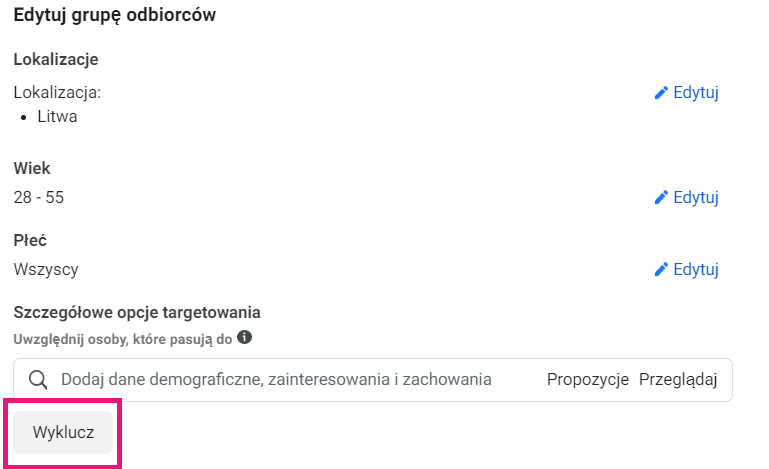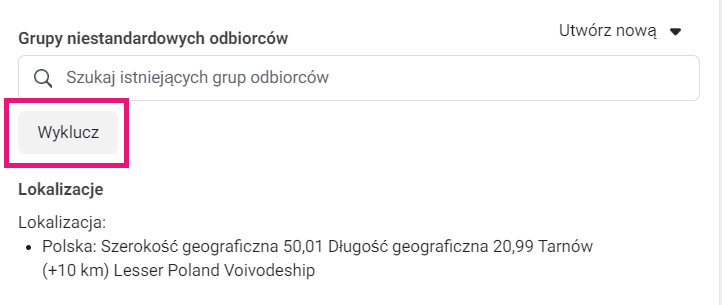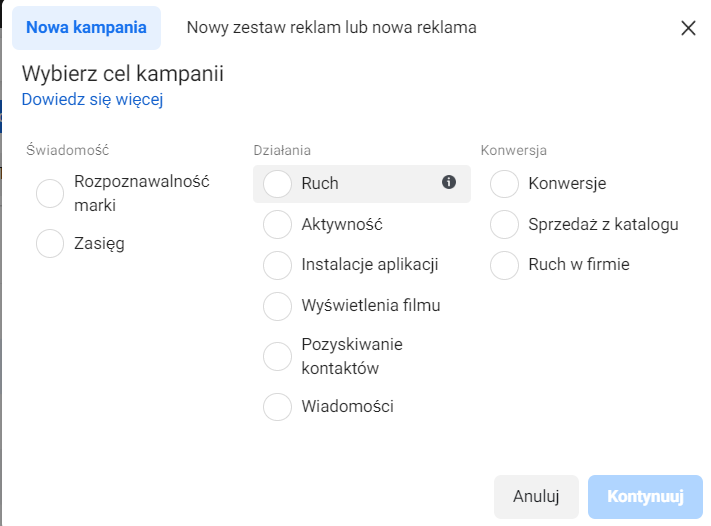Let me start by saying that this article is aimed at people who are just starting out with Facebook Ads. The state of new clients’ ad accounts has surprised me more than once (both negatively and positively). Today I’m going to discuss a few Facebook Ads mistakes that I often see on accounts when I start working with a new client.
Mistakes happen, we are only human! I have a few advertising blunders on my account. Today, when creating ads, I have a fairly long checklist with me, thanks to which I do not forget about the most important settings. And despite the fact that I have been dealing with Facebook Ads for 10 years, I do not trust myself, my memory and always look at the list "step by step".
I recommend!
Enough of the introduction, let's move on to the most common mistakes made when setting up Facebook Ads campaigns.
NO EXCLUSIONS
This mistake had to be in the first point. I admit that I don't always use exclusions, but at a beginner's level you have to remember them.
Exclusions allow us, as the name suggests, to exclude selected audiences. This is useful i.e..:
- in simple campaigns, e.g. for fanpage likes, where we have to exclude a group of our current fans. If we don't do this, the algorithm will direct the ad to them, among others, which will cause us to burn through the budget.
- with several campaigns that are targeted at overlapping audiences. For example: campaign 1 with the goal Traffic to www is directed to a group of similar audiences similar to those from our mailing list. Campaign 2 with the goal conversions is directed to a group of similar audiences to those who reacted to our posts on FB and IG in the last 7 days. If we do not exclude similar audiences from campaign 2 in campaign 1 (and vice versa), then we will partially reach the same group. What can this cause? Worse results, campaign fatigue, irritation of recipients who are shown too many of our ads.
HOW TO APPLY THE EXCLUSION METHOD?
Today we will cover two methods that can be used at the ad set creation level.
INTEREST EXCLUSIONS
We can add interests, but also exclude them. We may be interested in reaching people who like sports, but we are not interested in people related to fitness, pilates and yoga. So we exclude.
To do this, in the audience editing window, click EXCLUDE under the DETAILED TARGETING OPTIONS section, as in the screenshot:

EXCLUSIONS OF NON-STANDARD GROUPS
If we want to exclude: fans, lookalike audiences, pixel groups, we will find them all in the CUSTOM AUDIENCES section. There is also an EXCLUDE button there:

MISMATCHED GOALS
I often hear in conversations with clients "we want a campaign for reach" "we heard that a friend's campaign for activity went great". I also often see in the advertising accounts we take over that the chosen advertising objective does not meet the actual business objective. This happens when we forget or do not have a developed strategy. Another problem may be the lack of knowledge about the Ads Manager and which objective "is for what" :)
Facebook offers us several campaign goals:

Goal "Reach" will make us reach our target group quite quickly, but rather the part that is reluctant to click, comment, buy. We will probably reach people who simply see the ad, think "ok cool/not cool" and scroll further. But the goal is achieved - we got the message across. What benefit do we get from it? Usually none :)
"News" Purpose will make us reach a group of people who are more willing to click the "send message" button and write in private messages with brands. This is already a specific action.
Goal "Conversions" will allow us to reach that part of our target group who (depending on what exactly we have set as the conversion) are more likely to buy products online or who fill out contact forms on websites more often.
From the above descriptions it is easy to conclude that we need to know what we (the agency or the internal marketing department) will be billing for advertising: from visits to the website, from the number of comments, from additions to the basket or from the contacts provided?
So before you start a paid campaign, you need to sit down and think about it. “what do I want to gain from this campaign?”. I compare it to a situation where Someone who owns a bistro with a target group of "school youth" decides to hang billboards around town, when it would probably work better to print leaflets and hand them out around schools. This Someone didn't ask themselves the question "what action will I take to achieve goal XYZ?"
BUDGET NOT MATCHED
Here the matter is simple and quite short. If you have a small budget, e.g. PLN 3,000 per month, and you want to collect leads thanks to this, because the launch date of a project is approaching, in which participation costs PLN 1,000, then it is better not to spread yourself thin. Throw the entire budget into one campaign and one Ad Set. Refine the copy and ads, see what happens, introduce optimization.
In an ideal world, it would be good if we had a budget for brand awareness campaigns (goals: fp likes, activity, blog traffic) and for sales and remarketing campaigns. But let's measure our strength by intentions! A budget is needed to implement a campaign along the entire length of our customers' shopping path, a big budget.
You can also misalign your budget in the other direction – it can be too big. For example, we are running ads for small towns, small groups, the budget is e.g. PLN 100 per day. What happens? Our frequency, CPM and cost per result increase. In other words – the campaign overheats, gets tired because it has too small a group. This campaign will most likely not spend the planned budget anyway, because it will have nowhere to allocate it.
TOO MANY CREATIVES IN ONE ADVERTISEMENT SET
Too little is bad, too much is also bad. I recommend focusing on 2-3 creatives in one ad set at first. And best of all, max. two, and the third creative disabled and enabled when needed. Thanks to this, the algorithm will distribute these two creatives faster, learn them and the group, and exit the learning phase as quickly as possible.
In permanent campaigns, e.g. for activity under posts, let's try from time to time (sometimes weekly, sometimes monthly - a lot depends on the size and activity of the group) to simply rotate the posts and exchange them so that the campaign does not enter the learning phase again.
BAD AD PLACEMENT
A classic example of this mistake is running an ad with the goal of “phone calls” on phones and desktops. Or an ad for activity under a Facebook post without excluding all other placements.
Why do you have to disable the rest of the placements in a campaign for activity under a post on FB? Because if a post on FB appears as an ad on Stories, we won't see those likes, comments under the original post ;)
By selecting only the "Stories" placement for the "Movement" goal, we are able to set up a campaign that will lead from Stories to our Instagram profile and thus gain new followers.
As you can see, placements are a very important moment in advertising settings – don't forget about it.
SUMMARY
There are countless mistakes that can be made when setting up ads on FB! :) I hope that the above list of the five most important in my opinion will help you create better campaigns!
- Written by: Ola Dzwierzyńska
- Posted on: Jul 6, 2022
- Tags: Facebook advertising

